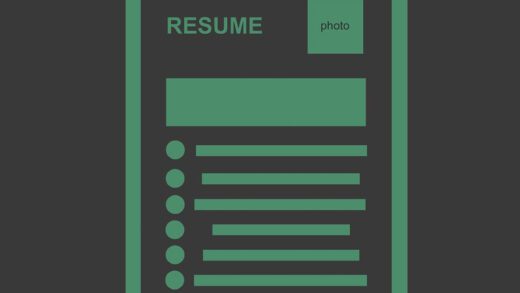For those who doubt their writing skills, creating a compelling cover letter can inspire feelings of dread, or in some cases, staring at a blank page for hours unable to come up with anything beyond “to whom it may concern.”
Luckily, writing a great cover letter is achievable for anyone — it just takes a little thought and planning.
What’s the purpose of a cover letter?
A cover letter is designed to give more context to your resume. It’s a chance to explain why your unique qualifications make you a good fit for the position, and above all, to show the employer what you’d be able to do for them if offered the role.
The anatomy of a great cover letter
When crafting your cover letter, it’s important to remember that you shouldn’t just summarize your resume. Instead, think about using your cover letter to fill in the gaps. This means highlighting how specific experiences make you qualified for the role, and also explaining any issues in your work history. Are you overqualified? Explain why you’re still interested in the role. Missing qualifications? Explain how your other experiences make you a good fit regardless. You should also use your cover letter as an opportunity to show an employer how you’ll help to grow their business.
Ready to get started? Here’s a sample formula.
First sentence: Introduce yourself and identify a problem
The first line of your cover letter should be tailored to address a specific issue that the employer faces. You can usually figure this out by reading the job description. Why might they be hiring for this role? What need does it fill?
Here’s an example that a healthcare professional might use:
** As a veteran critical care nurse, I’ve seen how busy the ICU can get. **
In this example, the writer mentions her background (establishing credibility), and also establishes a common link between herself and the hiring manager who has likely been experiencing this issue.
Second sentence: Contextualize the problem
The next sentence in your cover letter should frame the problem. This means offering a gentle reminder of how important the issue is, and offer an example of the kind of person the employer might be looking to hire. The key here is (again) to be specific.
** If you’re overwhelmed with high acuity patients, you need someone who can keep a cool head while delivering the right care. **
In this example, the writer is speaking to a specific problem that would resonate at a busy hospital.
Third sentence: Offer the solution and how you can help
The closing sentence of your first paragraph should help explain how you and your experiences intersect with what the employer needs. Like the above sentence, the key here is specificity. Don’t rely on cliché terms like “I’m a hardworking and motivated person,” (since most other candidates would probably describe themselves like that). Instead, introduce your individual experiences that illustrate those qualities.
** After working the floor for over five years, I’m used to staying calm and thinking quickly on my feet while administering medicines, communicating with patients’ families, and assisting with patient intake. I’d love to help your facility manage patients by making sure that everyone who visits receives the highest quality care. **
In this example, the writer brings up a few specific examples that speaks to the pain point mentioned in the sentence before.
Body paragraphs: bring up specific examples
In this section, choose a few specific experiences that address different areas of your experience. For example, to continue the letter above, the writer might explain about a time she successfully dealt with a situation where she had to think quickly and critically. Wrap up each paragraph with a sentence that ties the experience back to the job description and how you could help the employer.
Closing your letter: don’t overthink it
Wrap up your letter with a polite closing sentence.
** I’d love to discuss the position more with you soon. **

Final thoughts
When writing your letter, make sure it isn’t longer than about half a page to a page. Often, a hiring manager will only spend a short amount of time on a cover letter, so every word counts. Don’t forget to proofread! Read it out loud or give it to a friend to look over.
Even if you’re not confident in your writing skills, you can still create a cover letter that will get your application noticed. Just follow these tips and you can feel more confident when applying to your next position.
Please share your thoughts on How to create a cover letter that will get your application noticed, in the comment box.
 This is a Guest Post by – Molly Powers. Molly is the Editorial Manager at Relode, a healthcare recruiting company that uses crowd sourcing to connect healthcare professionals to jobs from top employers. When she’s not writing about how people can grow their careers and find their next new job, she’s spending time outside, hanging with friends, or trying to bake the perfect paleo brownie.
This is a Guest Post by – Molly Powers. Molly is the Editorial Manager at Relode, a healthcare recruiting company that uses crowd sourcing to connect healthcare professionals to jobs from top employers. When she’s not writing about how people can grow their careers and find their next new job, she’s spending time outside, hanging with friends, or trying to bake the perfect paleo brownie.
You may also like to read How to write a Resume that Stands Out







5 Comments
paige
August 13, 2018 at 11:39 pmdefinitely agree with this! such a helpful post
Sara Uzer
August 14, 2018 at 3:11 amGreat tips! I always struggled so hard with writing cover letters when I was fresh out of college. Especially the “not overthinking it ” part!
Ashley
August 14, 2018 at 4:13 amI am in the process of looking for a new job. While I love to write, writing a cover letter seems so daunting. This definitely helps. Thanks for the tips!
Jais
August 14, 2018 at 7:01 amThanks Ashley ,
Hope you get the desired job soon.